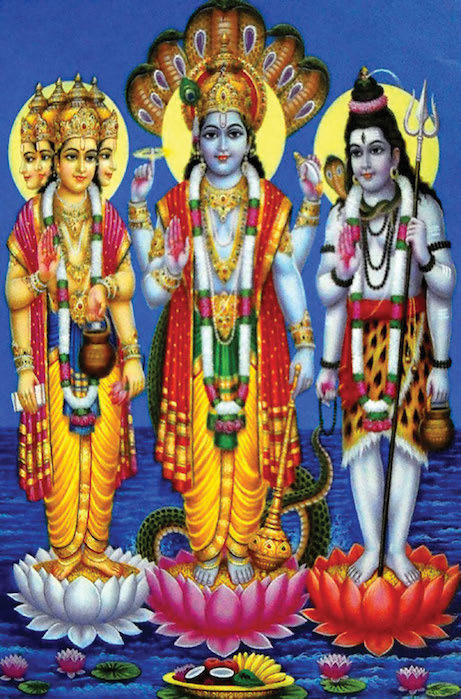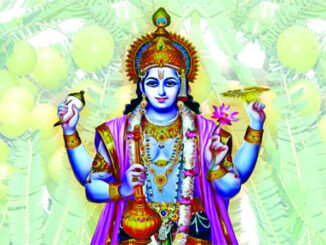
o-m saha na-vavatu; saha nau bhunaktu;saha viryam karava-vahai;tejasvi na-vadhitamastu;ma- vidvisha-vahai;
o-m Sa-ntih; Sa-ntih; Sa-ntih
Om! May He protect us both, (the teacher and the taught). May He cause us both to enjoy protection. May we both exert to find out the true meaning of the scriptures. May we never quarrel with each other. Let there be threefold Peace. Om. Peace! Peace! Peace!
It is the wish of several seekers who have come to participate in the Sadhana Week this year that during this holy occasion a concise presentation be made of the principles expounded in the great Vedic scripture, known as the Katha Upanishad. The purpose of so many sadhakas coming from long distances to this sacred abode at the foot of the Himalayas is obvious, viz. to gain a knowledge of the secret of life and gain also an access into the mysteries in which our life seems to be involved. The aim and mission of your visit to this sacred abode is naturally, as it ought to be, the revelation or the unfoldment of the entanglement of your personality, the involvements of your life, and to return with a newer type of enlightenment about that which you are, and that which involves you or in which you are involved.
Our life itself is the subject of study in the Katha Upanishad. Our life is a beautiful pattern of various threadwork woven dexterously by an expert Maker of all things, such that one cannot easily or intelligibly comprehend how it is made or why it is made. We often, as human beings, take life for granted, as if it is an open book before us.We regard our life as a clear presentation like daylight and go headlong along the business of our daily activities under the impression that things are perfectly perspicuous and we have simply to act on the thought that occurs to our mind. This is an unfortunate assumption on the part of the human being. The cloth of life is spread before us, but it is not a flat surface as we imagine it to be.
In ancient times, it is said, most people imagined the world or the earth to be a flat surface; the sun rose and the sun set, illumining a perfectly flat surface of the earth, not knowing that it was round like a ball or something like that. It was also thought that the sun revolved round the earth; the sun was smaller than the size of the earth, not knowing that the revolution of the planetary system is a highly complicated involvement of powers and forces not easily reducible either merely to the sun or the planets as the earth. Today astronomy, the science of the existence and the operation of the planets and the stellar system, is known to be a highly complicated structure of forces rather than of things. Likewise we, with a crass perception of visible objects, mistaking objects seen with our senses for what they appear to be, rush like fools where even angels fear to tread.
The consequence is that we are caught in the grip of unknown powers and forces. As monkeys are caught with the help of rope-nets spread to divert them into a mistaken idea of food being spread for them for their maintenance, likewise, the Maker of things seems to have spread out before us a pattern we call the world which we mistake for a heaven of enjoyment for our senses; but when we rush into it we are caught, and then it would be too late for us to repent. Everyone has been caught in this network of things called the world, right from creation up to the present day, and we have no reason to believe that the future generation will not be so caught. The pattern of life is not merely a location of objects for our enjoyment, for our likes and dislikes. The pattern of existence is a tremendously well thought-out involvement, externally as well as internally.
The more we probe into the mystery and the structure of this involvement of the world, the more we begin to admire the wisdom of the Maker of things. It is not a simple structure. It is not a small ball of earth we call the planet on which we merely live like ants crawling on the surface of a ball. The world, our life, is more subtle and more involved in various ways than our intelligence can permit us to understand. This mystery is the subject of the Katha Upanishad,which is generally defined as the mystery of death and the mystery of life. Well! Both mean one and the same thing if we understand them carefully. Life and death are identical. They are two aspects of one and the same event that takes place. This mystery of life, or the mystery of death as you would like to call it, is the secret of the Katha Upanishad; and side by side it is also a revelation of the mystery of the whole of existence, the mystery of you, the mystery of me and the mystery of everyone else, the mystery of your deeds, the mystery of the reactions of your actions, the mystery of the consequences of what you do and suffer and enjoy, the mystery of God Himself.
We shall, during these few days before us, try to have a quintessential comprehension of this very interesting Upanishad—‘Upanishad’ which means the secret knowledge or the wisdom of life—and try to be blessed in our souls that our speaking as well as listening becomes a contemplation of a particular form, a meditation, veritably, by which I pray and I wish that our souls may be lifted up into a higher knowledge and experience. The Katha Upanishad is one of the esoteric appendices to a section of the Vedas known as the Brahmanas.A particular Veda has a particular Brahmana and it has also a concluding esoteric exposition known as the Upanishad. The Katha Upanishad is such an esoteric,mystical, spiritual exposition appended to a Brahmana of the Krishna- Yajur-Veda. This Upanishad has within it implanted the wisdom of the entire life of man woven into a story of a great seeker of Reality we know as Nachiketas.
This is the story of a great aspirant called Nachiketas; how this young lad aspired for the highest Reality of life and got an access into it through the working of mysterious forces. The story that is the background of this exposition of the Upanishad is something like this—to give you in outline. There was a sage called Vajasravasa, known also as Gautama. He performed a yajna or a sacrifice called Vishvajit, a yajna or a sacrifice by which he aspired to enter the heaven of the gods. This sacrifice was of a very peculiar nature which demanded of the performer that he gave in charity everything that he possessed, dear and near. This Vishvajit sacrifice known as the sarvavedasa yajna was performed by Gautama or Vajasravasa, the sage.
In this yajna, through which performance he aspired to enjoy the pleasures of the heaven of the gods, he gave in charity as philanthropy everything that he possessed. All his belongings were given in charity—everything, whatever be the value of that possession— because that was the requisition of the yajna. Everything was given, and given, and given, nothing was left. Every day he began to give in charity all his possessions. This great sage known as Vajasravasa had also a son, perhaps the only son, known as Nachiketas. This unlettered boy, perhaps, untutored, simple, unsophisticated, observed this wonderful ritualistic performance of the Vishvajit sacrifice by his father,went on seeing everything being given—‘all things are going’. All the wealth of the sage was being given. Those days cattle were regarded as a great wealth. The cattle wealth was held to be real wealth. All the multitude of the cattle belonging to the sage were given in charity, but unfortunate it was to the sensitive mind of the poor lad Nachiketas, he began to observe that these cattle were famished. They were only skeletons.
Such cows were being given in charity—the cows which had drunk their water for the last time, which had eaten their grass for the last time, which were not going to calve again, which were without any strength in the body and were tottering with their poor legs. “Oh! Such charity is being given by my father!” The boy had no guts to speak but something urged him to speak forth his feelings.
The sensitive lad spoke out his inner heart and called out to his father, “Father, you give everything that belongs to you. I am your son. Perhaps I too belong to you. To whom do you propose to give me in charity? Because in this sacrifice you have to offer everything that belongs to you, and inasmuch as a son also seems to be a property of the father to some extent, evidently you think of giving me also. To whom do you want to give me?” The father had no idea of giving the son in charity to anyone. It was the last thing that he could imagine. The father paid a deaf ear to the words of the son. He said nothing. The second time the son asked the same question, “To whom do you want to give me, father?” He did not say anything. He was wroth. “Oh, this boy is butting in and impertinently putting me a question!” When a third time the boy asked the same question, the father responded, “To hell you go.” This is what we generally say when we are irate. And he said, “To death I give you.” He was angry. “Oh, I see! You give me to death.” The boy went on thinking, “What has death to do with me, death presided over by Yama? I am being sent to him. What has Yama, the Lord of Death, to do with me? I do not understand.”





Be the first to comment